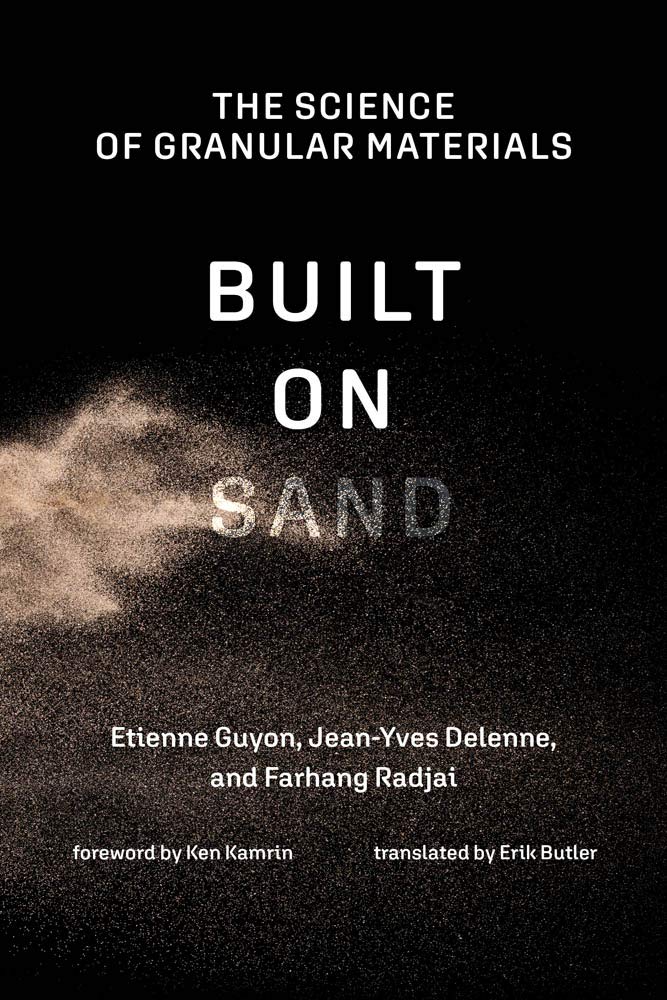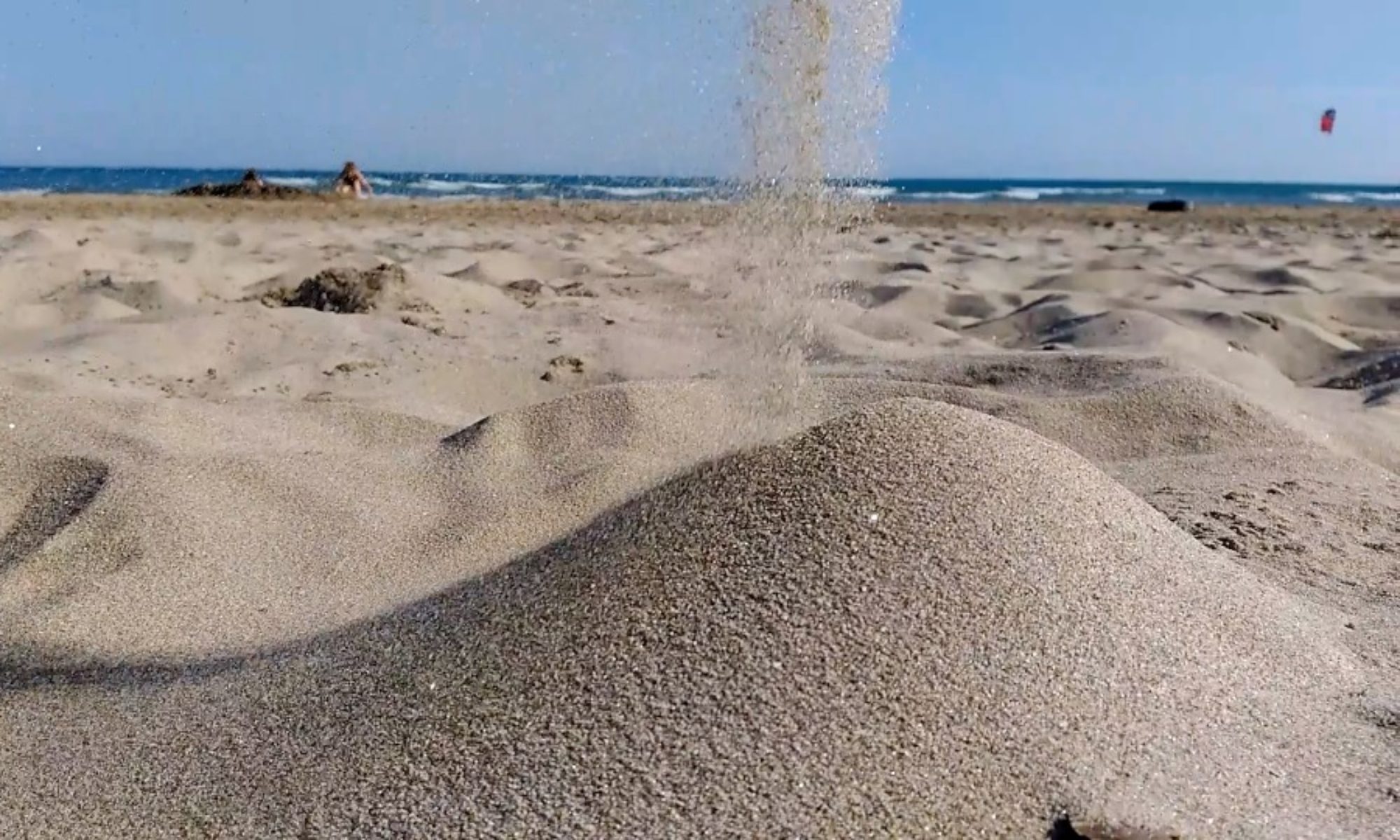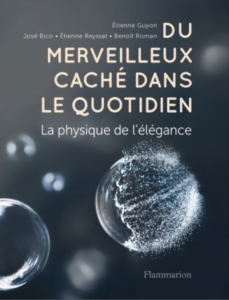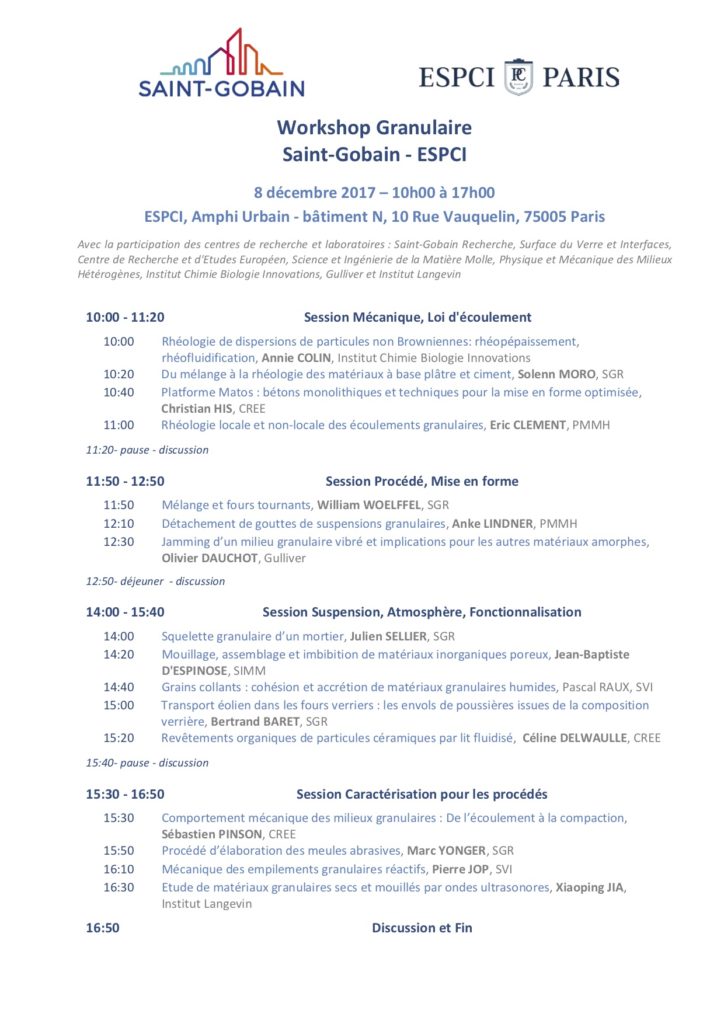Le livre Matière en Grains a été traduit et est disponible aux éditions MIT Press sous le titre Built on Sand – The Science of Granular Materials.

Granular matter—materials composed of vast amounts of solid grains—constitutes the most abundant form of matter on Earth. Granular materials assemble in disordered configurations scientists often liken to a bag of marbles. Made of macroscopic particles rather than molecules, they defy the standard scheme of classification in terms of solid, liquid, and gas. Avalanches, for example, can be characterized as friction, geometric congestion between grains. Granular materials provide a model for various domains, including engineering, physics, and biology, shedding light on collective behavior in disordered settings in general. William Blake famously wished “To see a World in a Grain of Sand”; in this book, pioneering researchers in granular matter explain the science contained in a simple assembly of grains.
The authors begin by describing a single grain with its different origins, shapes and sizes, then examine grains in piled or stacked form. They explain the packing fraction of granular media, a crucial issue that bears on the properties displayed in practical applications, explore small-scale deformations in piles of disordered grains, with particular attention to friction, and present theories of various modes of disorder. Along the way, key concepts such as force chains, arching effects, wet grains, sticky contacts, and inertial effects are discussed. Drawing on recent numerical simulations as well as classical concepts developed in physics and mechanics, this book offers an accessible introduction to a rapidly developing field.

 C’est un sentiment que nous avons tous éprouvé : derrière les objets qui émaillent notre quotidien se cache une étrange beauté. Elle semble le fruit d’un ordre naturel ou voulu, d’une organisation sous-jacente, mais aussi d’une fonction que nous ne percevons pas toujours.
C’est un sentiment que nous avons tous éprouvé : derrière les objets qui émaillent notre quotidien se cache une étrange beauté. Elle semble le fruit d’un ordre naturel ou voulu, d’une organisation sous-jacente, mais aussi d’une fonction que nous ne percevons pas toujours.